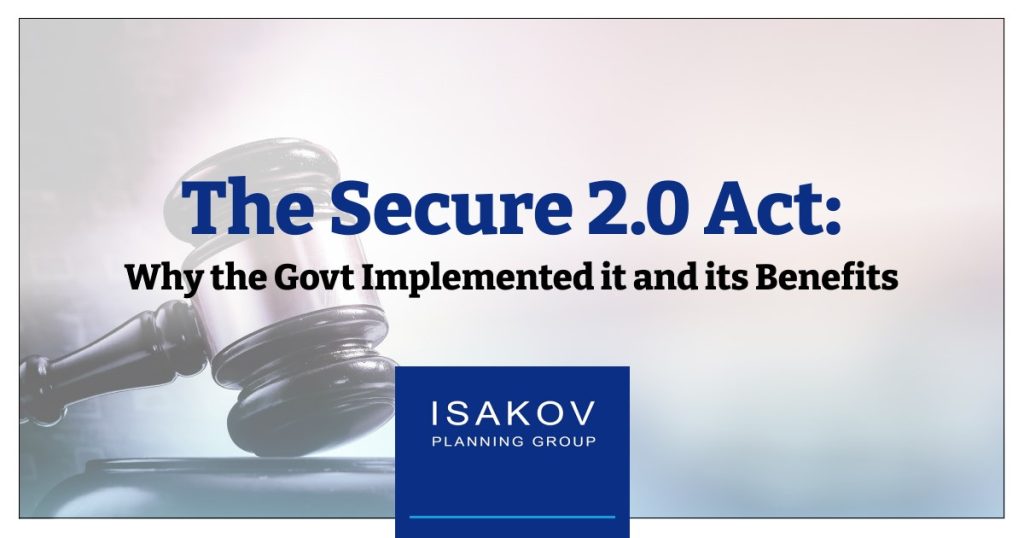What the SECURE Act 2.0 Means for You and Your Savings

With much fanfare, the federal government implemented changes for the 2023 tax year that could benefit anyone interested in putting more money away in their retirement accounts. The provisions of the SECURE Act 2.0 affect not only how much money can be placed annually into IRAs and 401ks, but when you have to start withdrawing these savings. The vast majority of these changes can help younger people just starting their own retirement savings account but also those who waited longer than they should have to ensure a secure retirement.
Here are the most important changes contained in SECURE Act 2.0 of 2022.
Mandated Distribution Date Changed to Age 73
Under the previous rules, people must begin withdrawing required minimum distributions (RMDs) by age 72 for all retirement accounts. In 2019, the law was changed to raise the RMD age from 70½ to 72. Recognizing that people are increasingly working past conventional retirement ages, beginning in January 2023, the RMD age was increased to age 73 (for those turning 72 this year). Under the terms of SECURE Act 2.0, the RMD age will again increase to age 75 in 2033.
Also starting this year, the financial penalty for failing to take an RMD will decrease to one-quarter of the withdrawal not made (down from one-half based on the previous rules).
Roth retirement accounts (i.e., contributions are taxed, distributions are not) will be exempt from these RMD rules and associated penalties beginning in 2024.
New Rules for Catch-up Contributions
The “catch-up contribution” was first allowed to permit people who delayed saving for retirement a chance to put additional money away before retirement. The old law allowed anyone 50 years or older to save $7,000 annually in a IRA (up from the standard $6,000 maximum). Beginning in 2025, anyone age 60–63 years old can increase their “catch-up” contributions, up to $10,000 or 150% of the regular catch-up amount (whichever is greater). Beyond 2025, the catch-up limits will be based on the inflation rate.
There is one important thing to know about this rule: For those earning more than $145,000 in 2022, those catch-up contributions must be made to a Roth IRA (i.e., contributions are taxed but withdrawals are not).
Employers’ Incentives to Start New 401k Plans
SECURE Act 2.0 authorizes employers with no retirement programs to begin a “starter 401k” plan as of 2024. Under this provision, all workers would be automatically enrolled with a 3% to 15% employee contribution rate.
Furthermore, employers are being incented to start new 401k plans through a full tax credit for setting up the program. In comparison, the tax credit for implementing a 401k had been 50%.
Want to Learn More?
The legislation contains a large slate of changes that could help strengthen the retirement system—and Americans’ financial readiness for retirement. Some other provisions of SECURE 2.0 attempt to help younger people save while paying off student debt, rolling over 529 plan accounts into Roth IRAs, simplify moving accounts from employer to another, enables qualified charitable distributions, and helps people save for emergencies within their retirement accounts.
Although SECURE 2.0 contains many provisions, we highlighted just a few that may affect the greatest number of people. For a fuller explanation of new rules and how they may affect your tax planning, contact Isakov Planning Group today.
